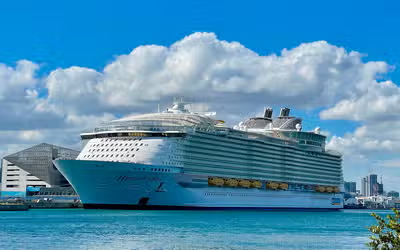All three aircraft carriers launched in China, including the one on sea trial, were likely underway at once, in what an observer called a rare event in the country's naval operations.
Duan Dang, a Vietnam-based security analyst who tracks military activities in China, said for a brief period on September 6 or 7, the whole Chinese aircraft carrier fleet was "likely at sea simultaneously, marking a rare event in the country's aircraft carrier operations." Newsweek has contacted the Chinese Defense Ministry for comment by email.
China has the world's second-largest aircraft-carrier fleet, with two of them in service—CNS Liaoning and CNS Shandong—and one under testing—CNS Fujian. The United States has 11 "flat-tops" in commission, which is the world's largest aircraft-carrier fleet.
Aircraft carriers are major platforms used by both China and the U.S. to project sea power in support of national interests and foreign policy in their immediate region and beyond. Newsweek has been mapping their aircraft carrier movements in the Pacific Ocean.
The Liaoning was spotted pierside at its home port in Qingdao in the eastern province of Shandong on Friday, according to open-source satellite imagery. It was observed not at the port on August 30 and was in the Bohai Sea on September 2 for training exercises.
The 60,000- to 66,000-ton Liaoning, named after the Chinese province, is the country's first operational aircraft carrier. It began construction as a Soviet "flat-top" in 1985. After the Soviet Union's dissolution in 1991, the construction was halted, and it was put up for sale.
The unfinished warship was sold in 1998 and arrived in China four years later. It was commissioned as the Liaoning in 2012 after rebuilding and was combat-ready in 2016.
The South China Sea-based Shandong, which is named after the province and the second Chinese aircraft carrier in commission, was not pierside at its home port in Sanya on the southern island province of Hainan, according to satellite imagery captured on Sunday.
"It is believed that the carrier [the Shandong] set sail to avoid Typhoon Yagi, which swept through the region over the weekend," the researcher in Vietnam said. The typhoon hit Hainan on Friday, and was the strongest autumn typhoon to land in China since 1949.
However, the warship was spotted in the waters 229 miles southeast of Sanya on Sunday. Last month, the aircraft carrier and three other warships were underway in the Philippine Sea for two days before returning to the South China Sea, which is its usual operating area.
On Monday, the Chinese state media released an undated video showing the Shandong and its carrier strike group conduct what it called "combat training" in the South China Sea and the Western Pacific Ocean, aiming to enhance the ability to operate in the far seas.
The "flat-top" was China's first domestically built aircraft carrier. Construction began in 2013, and the 66,000- to 70,000-ton warship was launched in 2017. It was officially put into service with the country's navy in 2019, following sea trials that commenced in 2018.
Meanwhile, the Fujian, the newest aircraft carrier in China, was spotted approaching the Bohai Sea on Saturday. It was operating further north in that area of waters on Monday, satellite imagery showed. It was put to sea for its fourth sea trial on September 3.
Construction of the Fujian began in Shanghai in 2017, and it was launched five years later. The warship, named after the province, has catapults launching its fixed-wing aircraft. Both the Liaoning and the Shandong use a less-efficient ski-jump ramp for aircraft takeoff.
The Fujian's catapults are powered by an electromagnetic system. It is the second in the world, after the U.S. Navy aircraft carrier USS Gerald R. Ford, to possess such advanced technology. But the Fujian has three launch tracks compared to the Gerald R. Ford's four.
The yet-to-be-commissioned warship has a displacement of more than 80,000 tons in full load, which is the largest among the three Chinese aircraft carriers. In comparison, all the U.S. Navy aircraft carriers—Nimitz-class and Gerald R. Ford-class—are 100,000 tons.
All three Chinese aircraft carriers are conventionally powered, while every American aircraft carrier in service and the French "flat-top" FS Charles de Gaulle are powered by nuclear reactors. These Western warships can be at sea for long periods without refueling.
The news of all the Chinese aircraft carriers underway at the same time comes after the U.S. Navy is facing a so-called "sea power gap" in the contested Western Pacific Ocean.
None of the six West Coast-based American aircraft carriers was in the Western Pacific Ocean as of last week, Newsweek's weekly update showed. Two of them had been diverted from scheduled deployments in the region to the tension-laden Middle East.
Disclaimer: The copyright of this article belongs to the original author. Reposting this article is solely for the purpose of information dissemination and does not constitute any investment advice. If there is any infringement, please contact us immediately. We will make corrections or deletions as necessary. Thank you.




